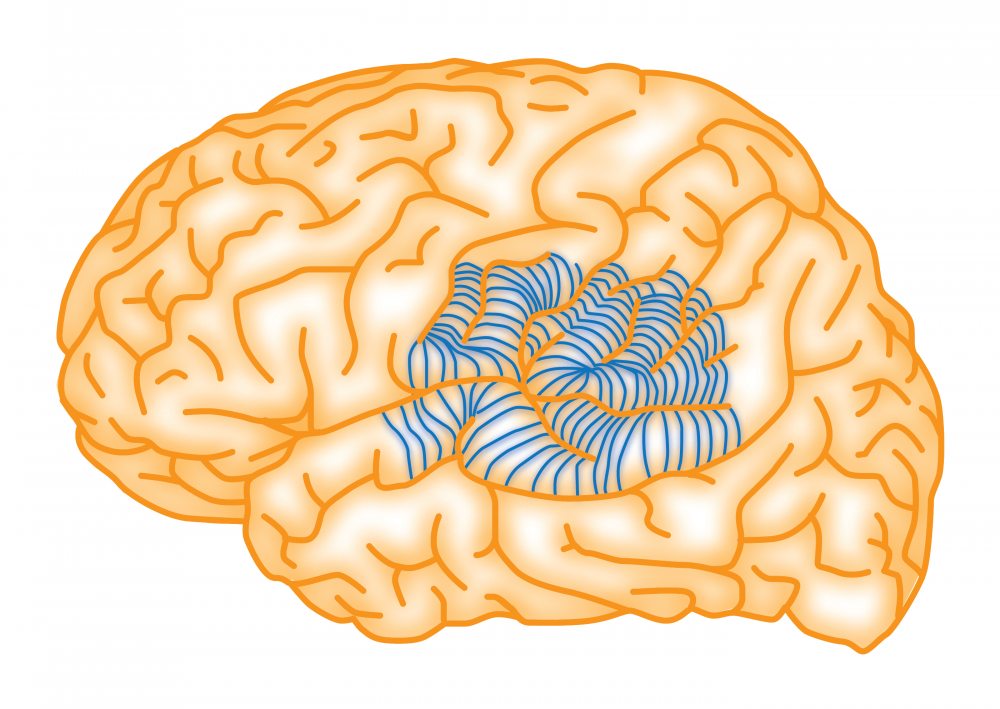Most epilepsy surgeries aim to remove or disconnect regions of the brain where seizures originate. But what if those regions are needed for essential functions like movement or vision? When this happens, surgeons sometimes turn to a procedure called multiple subpial transection (MST).

Within brain tissue, the fibers which are needed for function are arranged vertically, whereas the fibers that spread seizure activity are arranged horizontally. By making a series of shallow cuts in sites that interrupt the horizontal fibers, but not the vertical fibers, MST can prevent the spread of seizures while preserving critical brain function.
Multiple subpial transection is a palliative procedure. This means it DOES NOT eliminate seizures – it merely prevents seizures from escalating. So while MST is helpful, its benefits may be limited. For this reason, MST is usually combined with traditional epilepsy surgery on other, noncritical brain regions whenever possible.
This technique is well-known but not commonly used. Most children who undergo MST have a form of infantile seizures called Landau-Kleffner Syndrome, which can be difficult to treat with anti-seizure medication. But MST is also used to treat a condition called epilepsia partialis continua, which causes continuous seizures of the hands and face for years at a time. It can also be used to treat children with an abnormal brain structure, known as cortical dysplasia, or an inflamed hemisphere of the brain, known as Rasmussen encephalitis.
Over the past four decades, researchers have studied the safety and long-term effectiveness of MST. Most studies agree that the procedure is safe: patients rarely die during the surgery, and few have memory or visual problems that last longer than 3 months. Many patients report dramatic gains in behavior, communication and learning. But it’s unclear whether MST has lasting effects on seizure activity. Studies suggest MST is most effective when combined with traditional, resective or disconnective epilepsy surgery. But researchers are still exploring the benefits of MST as a stand-alone procedure.
Source:
Tovar-Spinoza Z and Rutka JT. Multiple subpial transections in children with refractory epilepsy. In: Cataltepe O, Jallo G, eds. Pediatric epilepsy surgery: Preoperative assessment and surgical treatment. New York: Thieme Medical Publishers, Inc.; 2010.
Learn more:
Basic facts about MST from the Epilepsy Foundation
Behavioral changes after MST
Besag F, Caplan R, Aldenkamp A, Dunn DW, Gobbi G, Sillanpää M. Psychiatric and Behavioural Disorders in Children with Epilepsy (ILAE Task Force Report): Behavioural effects of epilepsy surgery. Epileptic Disord. 2016 May 16. [Epub ahead of print] PubMed PMID: 27184947.
MST is relatively safe, but is it effective?
Benifla M, Otsubo H, Ochi A, Snead OC 3rd, Rutka JT. Multiple subpial transections in pediatric epilepsy: indications and outcomes. Childs Nerv Syst. 2006 Aug;22(8):992-8. Epub 2006 Jun 20. Review.
Usami K, Kubota M, Kawai K, Kunii N, Matsuo T, Ibayashi K, Takahashi M, Kamada K, Momose T, Aoki S, Saito N. Long-term outcome and neuroradiologic changes after multiple hippocampal transection combined with multiple subpial transection or lesionectomy for temporal lobe epilepsy. Epilepsia. 2016 Jun;57(6):931-40.
Hufnagel A, Zentner J, Fernandez G, Wolf HK, Schramm J, Elger CE. Multiple subpial transection for control of epileptic seizures: effectiveness and safety. Epilepsia. 1997 Jun;38(6):678-88.
A modified technique for MST
Ntsambi-Eba G, Vaz G, Docquier MA, van Rijckevorsel K, Raftopoulos C. Patients with refractory epilepsy treated using a modified multiple subpial transection technique. Neurosurgery. 2013 Jun;72(6):890-7; discussion 897-8.
 SUBSCRIBE TO OUR MAILING LIST
SUBSCRIBE TO OUR MAILING LIST